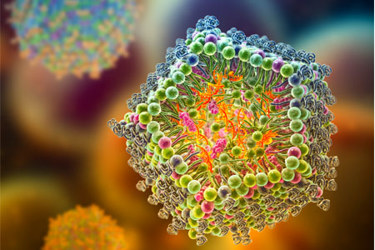Delivery Success In Gene Editing: Focusing On Lipid Nanoparticles To Show Effectiveness
By Max Sellman, Aldevron

Lipid nanoparticles (LNP) are emerging as an efficacious delivery strategy for gene editing reagents. At the Annual Meeting of the American Society of Gene and Cell Therapy, companies like SalioGen Therapeutics, Tessera, and Verve Therapeutics showcased their breakthroughs in LNP-mediated delivery of mRNA for gene editing. SalioGen Therapeutics achieved a 40% expression of introduced DNA in treated cell populations for Stargardt Disease, while Tessera's Gene Writing technology showed high efficiency rates in T cell editing studies. Verve Therapeutics presented their lead clinical program using LNPs to deliver a base editing medicine for reducing LDL-C levels and treating Atherosclerotic Cardiovascular Disease.
In this article, we delve into the importance of delivery success in gene editing and highlight the use of viral vectors and lipid nanoparticles as two approaches to improve this aspect. Viral vectors are modified viruses that carry gene editing tools into cells, while lipid nanoparticles are tiny particles made of lipids that encapsulate and deliver the tools. Choosing the right delivery method is crucial, with viral vectors being suitable for delivering gene editing tools to cells in the body and lipid nanoparticles for laboratory settings.
Get unlimited access to:
Enter your credentials below to log in. Not yet a member of Cell & Gene? Subscribe today.
